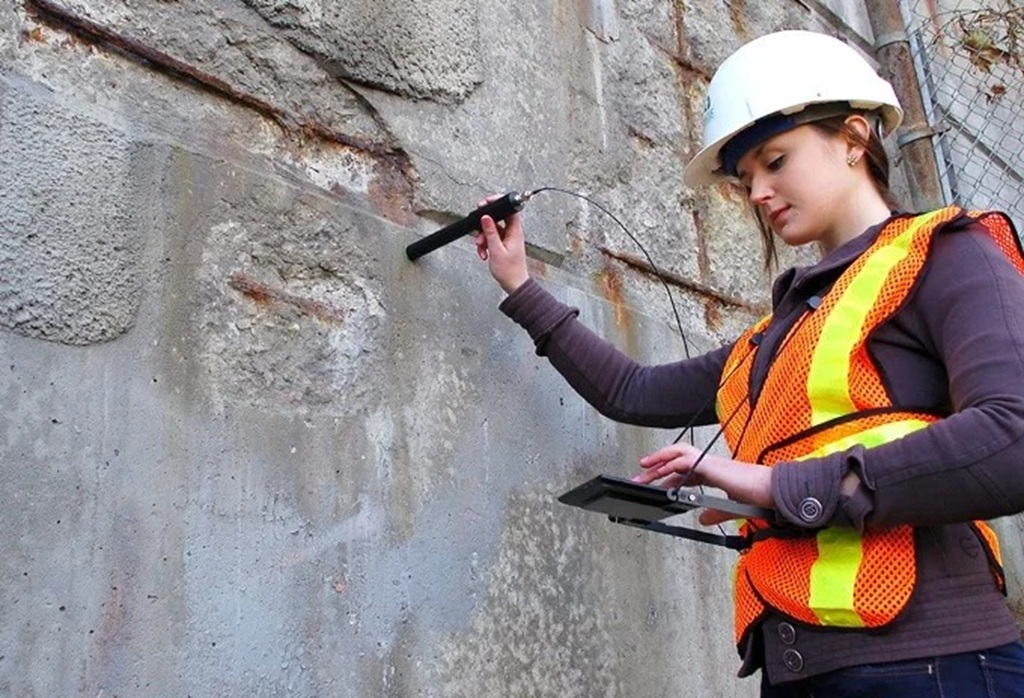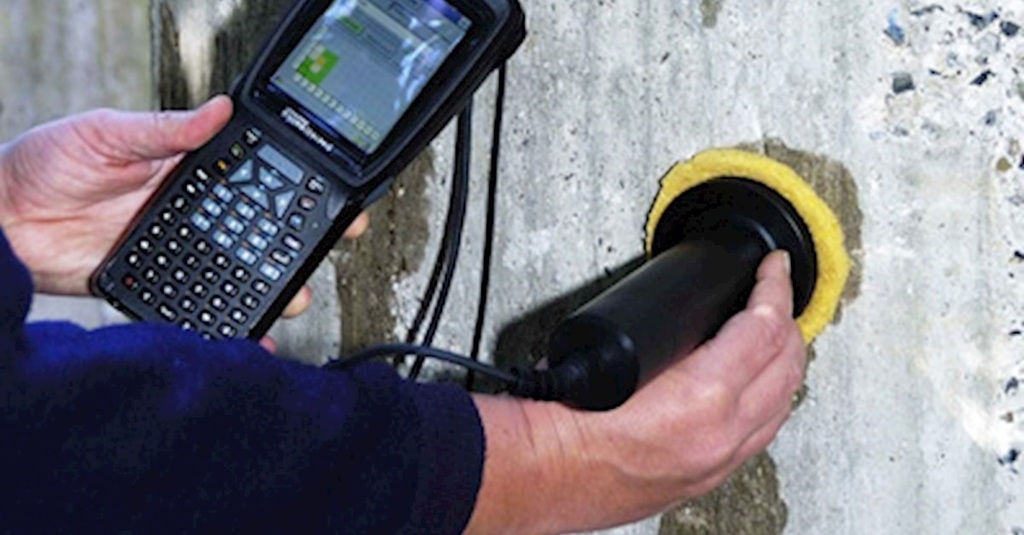Reinforced concrete, a stalwart of modern construction, underpins everything from towering skyscrapers to the intricate networks of bridges that connect our communities. However, this seemingly invincible material is vulnerable to a silent enemy: corrosion. The insidious process of steel reinforcement degradation, triggered by environmental factors, can severely compromise the structural integrity and lifespan of concrete structures. This article delves into the critical realm of corrosion monitoring, exploring its methodologies, significance, and the evolving technologies that are shaping the future of infrastructure maintenance.
Understanding the Silent Threat: Corrosion in Reinforced Concrete
Corrosion, in essence, is the electrochemical breakdown of steel reinforcement within concrete. The process is initiated when chloride ions or carbon dioxide penetrate the concrete cover, reaching the steel rebar. These agents disrupt the passive layer that normally protects steel in the alkaline environment of concrete. Once this layer is compromised, an electrochemical reaction commences, leading to the formation of rust. This rust occupies a significantly larger volume than the original steel, inducing internal stresses that crack and spall the concrete, ultimately weakening the structure.
The consequences of unchecked corrosion are far-reaching, encompassing:
- Reduced Load-Bearing Capacity: Corrosion diminishes the cross-sectional area of steel rebar, compromising its ability to withstand loads.
- Cracking and Spalling: The expansive force of rust leads to concrete cracking, exposing more steel to corrosive agents and accelerating deterioration.
- Structural Failure: In severe cases, corrosion can result in catastrophic structural failure, posing a significant risk to public safety.
- Increased Maintenance Costs: Early detection and intervention are crucial to minimize costly repairs and extend the lifespan of structures.
The Imperative of Proactive Corrosion Monitoring
Traditional maintenance approaches, often reliant on visual inspections and periodic repairs, are reactive and inefficient. They fail to address the underlying corrosion process in its early stages, leading to significant deterioration before intervention. Proactive corrosion monitoring, on the other hand, provides real-time or periodic data on the condition of steel reinforcement, allowing for timely and targeted interventions.
This approach offers numerous benefits:
- Early Detection: Monitoring systems can identify corrosion initiation and propagation before visible signs of damage appear.
- Predictive Maintenance: Data from monitoring systems can be used to predict future corrosion rates and schedule maintenance activities accordingly.
- Optimized Resource Allocation: Proactive monitoring allows for targeted repairs, reducing unnecessary interventions and minimizing costs.
- Enhanced Structural Safety: Continuous monitoring ensures the ongoing integrity of structures, mitigating the risk of failures.
- Extended Service Life: Timely interventions based on monitoring data can significantly extend the lifespan of concrete structures.
Methods of Corrosion Monitoring: A Comprehensive Overview
Various techniques are employed for corrosion monitoring, each with its strengths and limitations.
-
Electrochemical Techniques:
- Half-Cell Potential Measurement: This widely used technique measures the electrical potential difference between a reference electrode and the steel reinforcement. It provides an indication of the probability of corrosion activity.
- Linear Polarization Resistance (LPR): LPR measures the polarization resistance of the steel, which is inversely proportional to the corrosion rate. It provides quantitative data on the rate of corrosion.
- Electrochemical Impedance Spectroscopy (EIS): EIS analyzes the electrochemical response of the steel to an applied alternating current, providing detailed information about the corrosion process and the condition of the concrete cover.
- Galvanic Current Measurement: Measuring the current between different rebars or between rebar and an external anode can reveal the rate of galvanic corrosion.
-
Non-Destructive Testing (NDT) Techniques:
- Ultrasonic Pulse Velocity (UPV): UPV measures the speed of ultrasonic waves through concrete, which can be used to assess the quality and integrity of the concrete cover and detect cracks.
- Ground-Penetrating Radar (GPR): GPR uses electromagnetic waves to image subsurface structures, including steel reinforcement and corrosion-induced damage.
- Infrared Thermography: Infrared thermography detects temperature variations on the concrete surface, which can indicate areas of moisture ingress and potential corrosion.
- Acoustic Emission (AE): AE monitors the release of energy from cracks and other defects in concrete, providing information about the location and severity of damage.
-
Embedded Sensor Technologies:
- Embedded Corrosion Sensors: These sensors, permanently installed within concrete, provide continuous data on corrosion rates, chloride content, and other relevant parameters.
- Fiber Optic Sensors: Fiber optic sensors can measure strain, temperature, and other parameters within concrete, providing insights into the structural behavior and corrosion process.
- Wireless Sensor Networks (WSNs): WSNs enable remote monitoring of concrete structures using a network of wireless sensors, facilitating continuous data collection and analysis.
The Future of Corrosion Monitoring: Technological Advancements
The field of corrosion monitoring is rapidly evolving, driven by advancements in sensor technology, data analytics, and artificial intelligence.
- Smart Sensors: Miniaturized, low-power sensors are being developed to provide more accurate and reliable data on corrosion parameters.
- Internet of Things (IoT): IoT platforms are enabling seamless integration of sensor data with cloud-based analytics and visualization tools.
- Artificial Intelligence (AI) and Machine Learning (ML): AI and ML algorithms are being used to analyze large datasets from monitoring systems, predict corrosion rates, and optimize maintenance strategies.
- Digital Twins: Digital twin technology creates virtual replicas of concrete structures, allowing for simulations and predictive modeling of corrosion behavior.
Read More Also: Understanding Fire and Explosion Hazards in Industrial Settings
People Also Ask (FAQs)
Q: What are the main causes of corrosion in reinforced concrete?
A: The primary causes are chloride ion ingress (from deicing salts or seawater) and carbonation (reaction with atmospheric carbon dioxide), both of which compromise the protective alkaline environment around the steel rebar.
Q: How often should reinforced concrete structures be inspected for corrosion?
A: Inspection frequency depends on the environment and the structure’s importance. High-risk structures in aggressive environments may require annual inspections, while others may require inspections every 5-10 years. Continuous monitoring is ideal for critical infrastructure.
Q: What are the signs of corrosion in reinforced concrete?
A: Visible signs include cracking, spalling, rust staining, and delamination of the concrete cover. However, corrosion can be well underway before these signs appear.
Q: Can corrosion be stopped once it starts?
A: While complete reversal is difficult, corrosion rates can be significantly reduced through techniques like electrochemical chloride extraction, re-alkalization, and applying corrosion inhibitors.
Q: What are the costs associated with corrosion monitoring?
A: Costs vary depending on the monitoring method, sensor density, and data analysis complexity. However, the long-term cost savings from proactive maintenance outweigh the initial investment.
Q: How can I choose the right corrosion monitoring method for my structure?
A: Consider the structure’s environment, criticality, budget, and required data granularity. Consulting with corrosion experts is recommended.
Q: Are wireless sensors reliable for long-term monitoring?
A: Modern wireless sensors, with optimized power management and data transmission protocols, are highly reliable for long-term monitoring.
Q: How does AI help in corrosion monitoring?
A: AI algorithms analyze sensor data to identify patterns, predict corrosion rates, and optimize maintenance schedules, improving efficiency and accuracy.
Read More Also: Enhancing Productivity Through Smarter Factory Layouts
Conclusion: Building a Resilient Future Through Proactive Monitoring
Corrosion monitoring is no longer a luxury but a necessity for ensuring the long-term integrity and safety of reinforced concrete structures. By embracing advanced technologies and adopting a proactive approach, we can move away from reactive repairs and towards a future where infrastructure is resilient and sustainable. The integration of smart sensors, IoT platforms, and AI-driven analytics is transforming the landscape of corrosion monitoring, enabling us to anticipate and mitigate the silent threat before it leads to catastrophic consequences. As we continue to innovate and refine our monitoring techniques, we are building a safer and more durable infrastructure for generations to come. The continued development of accurate and cost effective sensors, coupled with machine learning analysis, will allow for even greater predictive capabilities, and ensure the longevity of our vital concrete infrastructure.





